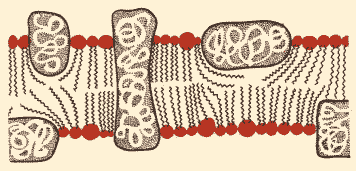Biological membranes play a great role in most processes occurring in the cell and determine substantially the cell's response to changes in the surrounding medium. In recent years the Institute of Mathematical Problems of Biology, RAS in collaboration with the Institute of Biology, RAS (Karelian Research Center) have been engaged in modeling bilayer lipid systems by the MD method. The work has been repeatedly supported by the RFBR grants. |

Liquid-mosaic model of a plasmatic biomembrane |



